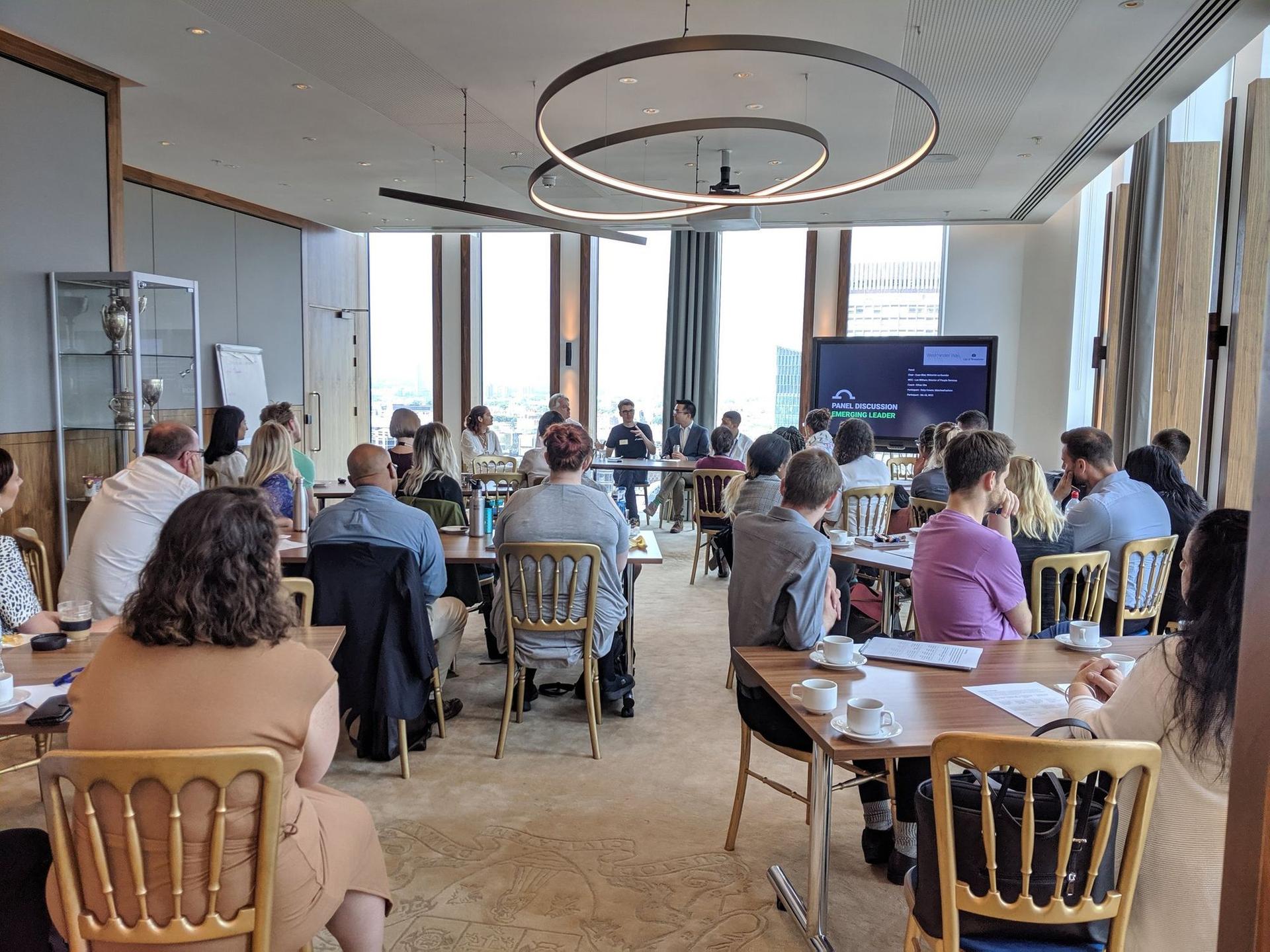The Right Way to Reskill: 3 Secrets to Employee Apprenticeships Your Teams Will Actually Love

Is this thing on?
There's nothing quite like the humiliation of being the only person giving shoutouts to your latest employee workshop on the company Slack channel.
You've read the research.
You know professional development is key to getting employees to stay. And you genuinely care about creating an environment where they want to stick around.
But implementing an upskilling or reskilling programme people actually participate in is no easy feat.
Here are some of the most common reasons employee apprenticeships don't get the traction they deserve, along with insider tips on how to get them back on track.
#1. Keep it relevant
When we asked Zoë Canvin for the most important factor to a successful employee apprenticeship, she didn't even blink.
"Relevance to current role."
As a London-based Programme and Events Lead for one of the UK's leading educational charities, TeachFirst, Zoë knows the success of any professional development programme hinges on how great an impact it can make on the learner's future.
For her, a winning employee apprenticeship is all about "whether or not it fits into the person's career plans. Is this something you want to continue pursuing?'
It's a point most of us take for granted.
Yet, the majority of companies continue to push development opportunities that simply aren't targeted to the real roles, responsibilities and professional goals of their employees.
Maybe that's why 75%(opens new window) of employer-side respondents to a McKinsey & Co. survey reported that training failed to improve employee performance.
On the flip side, hyper-relevant upskilling programmes are a fantastic way to evolve a junior employee into a senior role and boost retention via succession.
Just make sure it's a skill the employee (not the HR department!) wants to learn.
#2. Keep it simple
In this day and age, everyone's busy.
A 2018 survey of 500 US-based managers found that 36% of them spend 3 to 4 hours per day on admin(opens new window). Take a second to let that sink in...
Nearly half of a manager's day is eaten up by mundane, non-strategic tasks.
Is it any wonder they don't make time for learning and development?
Whether it's mentorship, a workshop or an employee apprenticeship—the way you deliver the opportunity is just as important as the opportunity itself.
"If the course is too prescriptive or not able to work around people’s busy schedules, then people won’t want to commit," says Zoë. "The way the course is delivered (e.g., remotely via web, face-to-face sessions, etc.) and the flexibility of this is hugely valued."
At WhiteHat, employee apprenticeships include range of training resources like 1:1 coaching sessions, e-classroom lessons, and setting up mini experiments and insight days so employees can choose for themselves which activities best support their current workload and lifestyle.
Most apprenticeships require 20% additional job training—on top of full-time working hours.
At first glance, that sounds like a lot.
But what if employees could learn and work simultaneously by taking time during the working day to shadow a colleague or meet up with a manager to discuss progress?
A truly flexible employee apprenticeship is about acknowledging and encouraging the many diverse tasks that contribute to a person's professional growth—not just a signature on a sign-in sheet.
#3. Keep it consistent
According to the 2019 HRD People Leaders Report(opens new window), talent was identified as the #1 challenge—greater than both technological disruption and the digital skills gap.
The HR leaders surveyed cited ‘finding the right talent’ as their primary hurdle, closely followed by a ‘lack of leadership capabilities' in employees.
If it's relevant, practical and flexible enough, a great employee apprenticeship can solve both of those challenges.
When Laura Tomsett took on the role of Recruitment Advisor at Christie’s, she had zero experience with the type of hiring projects the world-famous auction house had come to rely on.
"The most valuable thing from my apprenticeship has been to take the learnings from the course and apply them to my day-to-day role, ensuring that I work more effectively and efficiently. It has also given me the opportunity to self-assess my own strengths and work on areas for improvement, giving me more confidence in the workplace to make decisions and engage in new activities," explains Laura.
In her case, an employee apprenticeship was exactly what she needed to adopt a new set of skills, find greater efficacy in her role, and pave the path toward leadership.
But that's also because she stuck with it.
"I know very well that the programme is outlined a certain way to ensure success, so it’s hugely valuable to stick to that format!" says Zoë. For her, Laura and others, the biggest risk to any employee apprenticeship is a lack of commitment to the programme.
And as the employer, that responsibility lies with you.
Because after all, if you really want to grow your employees into leaders, you'll need to offer a programme worth following.

Euan Blair